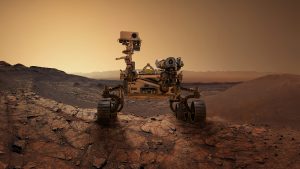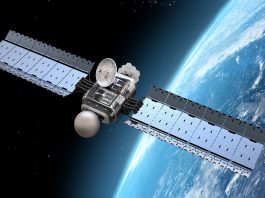Due to new funding for UK space projects, scientists and engineers from the UK are set to play a major role in global missions to the Moon, Mars, and Venus.
The £7.4m funding from the UK Space Agency will accelerate work towards international space science and exploration projects.
Among the projects set to receive funding is the Space Science and Exploration Bilateral Programme, where Royal Holloway will develop software for the Indian Space Agency Chandrayaan-2 orbiter. This technology will help to detect ice under the surface of the lunar south pole.
Another project will see the University of Leicester lead on a Raman spectroscopy instrument for iSpace’s commercial rover and lander missions investigating water ice on the Moon. The space exploration project aims to improve understanding of whether the resource could be used for longer-term lunar exploration.
Other projects to receive a share of the funding include the Open University and universities of Sussex, Aberdeen and Cambridge teaming up with NASA, the Canadian Space Agency (CSA) and the Japan Aerospace Exploration Agency (JAXA).
Dr Paul Bate, Chief Executive of the UK Space Agency, said: “These projects present an opportunity for UK science to make crucial contributions to ground-breaking global missions that will deepen our understanding of the Moon and our neighbouring planets.”
Collaboration with partners across the globe
The announcement coincides with the Global Space and Technology Convention (GSTC), taking place in Singapore this week. The convention is set to showcase Asia’s growing space sector and opportunities for international collaboration.
The space exploration projects and a UK delegation at the GSTC highlight how the UK supports its scientists to work with partners around the world, as implemented in the National Space Strategy.
Marie-Claire Perkinson, Chair of the Space, Science and Exploration Committee at UKspace said: “Developing strong relationships through these projects is a key step toward future industrial collaboration.”

UK space science excellence
Following an initial funding round, the space projects have already received a total of £400,000.
They represent both UK scientific excellence in critical areas of space science and exploration technology, such as detector hardware development, pipeline processing, and optics and spectroscopy.
The projects also provide opportunities to work collaboratively with international counterparts who are making progress in similar areas.
About the space projects
The projects that have received funding include:
Chandrayaan-2 and Shukrayaan (Royal Holloway and ISRO, India) – £306,000
The project is responsible for processing multi-band radar and developing analysis software to detect lunar south pole sub-surface ice.
Star-X (University of Leicester and NASA, US) – £650,000
The project will study the formation of the Universe using the time-domain method and multi-messenger astrophysics by developing high-level science data.
FIR missions (University of Sussex and NASA, US) – £1.1m
Provision of superconducting detectors, detector systems, optics, filters, and data pipelines. This technology could be used for a probe mission to investigate the formation of planetary systems and the evolution of galaxies.
HABIT (University of Aberdeen and JAXA, Japan) – £320,000
The funding will develop an instrument to monitor air and ground temperature, wind, humidity, and hydration state of salts, for a Mars rover studying water cycle, chemistry, and habitability.
I-MIM (The Open University and CSA, Canada) – £2m
The space project will focus on high-performance detectors for the Mars multispectral and stereo imager for the International Mars Ice Mapper mission. The technology will map accessible water ice deposits on the Martian surface.
Lunar Spectroscopy (University of Leicester and iSpace, Japan) – £1.5m
The project will lead the development of the Raman analytical spectroscopy instrument based on the Raman laser spectrometer. The instrument will be used for commercial small lunar landers and rovers that will explore the lunar surface for space resource utilisation.
CosmoCube (University of Cambridge and NASA, US) – £1.5m
The team will develop a mission and space platform for a cube-sat that will deploy a precision radiometer to measure spectral distortions in the Universe’s cosmic microwave background.









